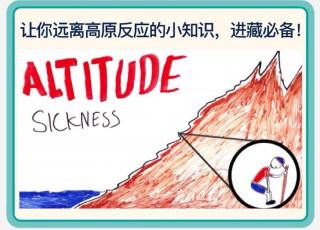
介绍:
1. The most common altitude sickness is acute altitude sickness, also called acute mountain sickness, symptoms include headache, dizziness, loss of appetite and poor sleep. A less common form is HAPE or high altitude pulmonary edema.
2. The symptoms and effects of HAPE are more severe with additional symptoms that involve your lung. These include shortness of breath even at rest. You'll have difficulty walking and you'll have a cough that may produce frothy sputum and can betinged with blood.
3. Preventing altitude sickness is easy to do especially if you know the symptoms or had it before. So to prevent it, ascend more slowly. Give your body a couple days of slowly going higher in altitude in order to adjust to the changes.
4. Make sure you hydrate well and take it easy while you acclimate. Try to avoid excessive alcohol as itwill nullify the healthy steps you'retaking. Lastly there are medications we can prescribe to help. Preventing altitude sickness is about knowing your body, your medical history, and properly preparing before going to a higheraltitude.
最常见的高原反应是急性高原反应,也叫急性高山反应,症状包括头痛、头晕、食欲不振、睡眠不好。较少见的是HAPE又称高海拔肺水肿。
HAPE的症状和结果更严重,还有额外的症状,涉及你的肺部。这些症状包括即使在休息时也会呼吸急促。会行走困难,咳嗽时可能会产生泡沫痰,并带有血丝。
预防高原反应很简单,特别是如果你知道症状或以前有过这种情况。所以为了预防它,要更缓慢地上升高度。给你的身体几天的时间慢慢地升高海拔,以便适应这种变化。
在适应的过程中,确保充足补充水分,放松心情。尽量避免过量饮酒,因为它会使你的健康步骤失效。最后,我们可以开一些药物来帮助你。预防高原反应的方法是了解自己的身体和病史,并在去高海拔地区之前做好适当的准备。

